Q | I can’t do a pull-up yet, but I really want to get there. Where do I start?
A | Pull-ups are challenging for many people because they engage both large and small muscle groups — primarily your biceps, triceps, lats, and core.
“You’re pulling your entire body weight against gravity up to the bar,” explains Artemis Scantalides, NASM-CPT, personal trainer and co-owner of Iron Body Studios in West Roxbury, Mass. “You need to build upper-body and core strength to do pull-ups.”
Though they’re challenging, pull-ups are the ultimate “mastery experience,” Scantalides says. Mastery experiences are those moments in training when you achieve a goal you never thought was possible. She has found that once people do their first pull-up, they are motivated to work toward other fitness goals.
To master your first unassisted pull-up, Scantalides recommends the following progression:
1. Straight-Arm Hangs

- Hang from a pull-up bar, keeping your core tight and shoulders away from your ears (pulling your shoulder blades down and back; it will feel like the start of a pull).
- Begin with three sets of 10-second holds. Build up to three sets of 30 seconds, increasing hold time in five-second increments.
- Perform once or twice per week.
2. Flexed-Arm Hangs

- Graduate from the straight-arm hang to a flexed-arm hang: Keeping your core engaged, hang from a pull-up bar with arms bent 90 degrees.
- Start with three sets of 10-second holds. Build up to three sets of 30 seconds, increasing your hold time in five-second increments.
- Perform one to two times per week.
Once you’re able to hold a flexed-arm hang for three sets of 30 seconds, add in the following pull-up variations to build strength and stamina.
3. Eccentric Pull-Ups
- Jump up or use a box to position yourself at the top of a pull-up.
- Slowly lower yourself until your arms are fully extended. Keep your core engaged and shoulders drawn away from your ears throughout the movement.
- Perform three sets of three reps one day per week.
4. Band-Assisted Pull-Ups
- Attach a closed-loop resistance band to a pull-up bar and loop it under one or both feet. As you do a pull-up, the band will help you reach your chin over the bar. If you’re unable to lift yourself, you may need to use a second or a thicker band.
- Start with three sets of three reps and build up to five sets.
- Perform three days per week.
Mix Up Your Grip
The standard pull-up grip is “double-overhand,” meaning both hands face away from you. There are, however, a variety of alternative options worth trying so you can determine which is best suited for your unique physiology, strength, and mobility.
It’s common to begin with a chin-up grip, then to progress to a neutral grip and finally a standard pull-up grip — but that may not necessarily be the ideal pull-up journey for you. Experiment with the different grips below to find the ones you can perform with relative ease and no pain. You can vary the grips from workout to workout while still building overall strength to reach your goal of doing your first pull-up. (To learn how to increase your grip strength, see “How to Improve Your Grip”.)
Pull-Up Grip
Palms face away from you as your hands wrap around the bar.

Chin-Up Grip
Palms face toward you as your hands grip the bar.
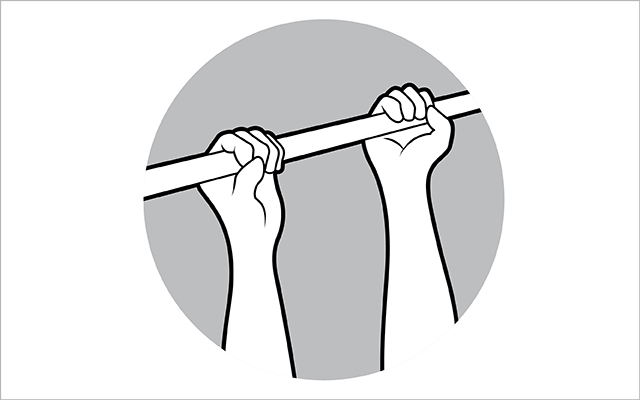
Neutral Grip
Palms face each other as your hands wrap around a set of handles.

Mixed Grip
Palms face in opposite directions (one away and one toward you).

Ring Grip
Palm orientation will vary through the range of motion.
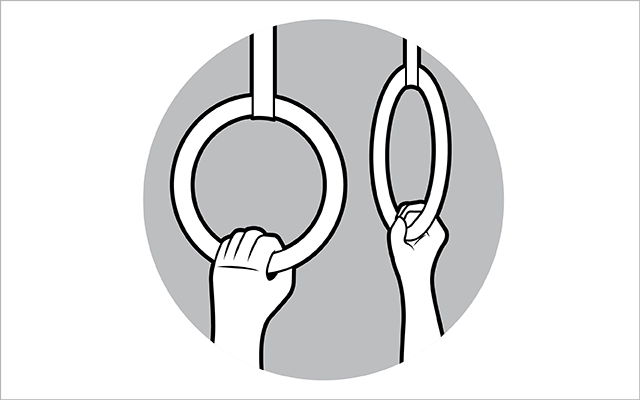
Up Your Pull-Up Game
These two upper-body exercises will help support your pull-up progress.
Pull-ups are a full-body move, meaning you can use other strength-builders to support your pull-up progress. Incorporate these two moves into your routine one or two times per week for added upper-body and core strength:
Inverted Rows With Suspension Trainer
- Grip the handles of a suspension trainer (palms facing the floor, each other, or the ceiling) with your arms extended in front and your body in an upright position.
- Walk your feet toward (harder) or away (easier) from the mounting point to find the appropriate level of resistance.
- Pull the handles toward you until they reach the bottom of your rib cage.
- Perform three sets of 10 repetitions.
Ab Roll-Outs With Suspension Trainer
- Facing away from the anchor point, kneel on the floor and hold the handles of a suspension trainer with an overhand grip.
- Keep the arms straight and extend overhead to lower your hips toward the floor.
- This exercise can also be performed in a standing position if kneeling is too challenging.
- Start with three sets of five reps and build to three sets of 10 reps.
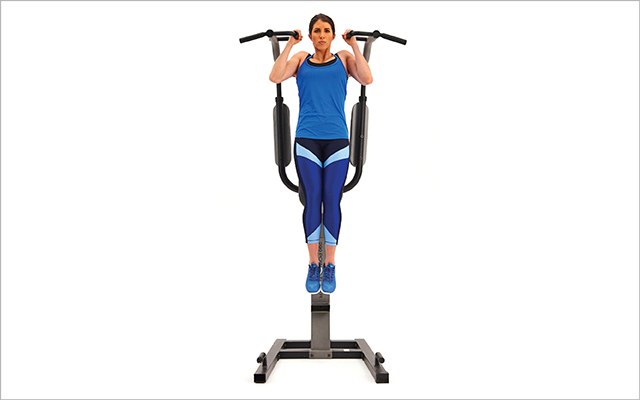
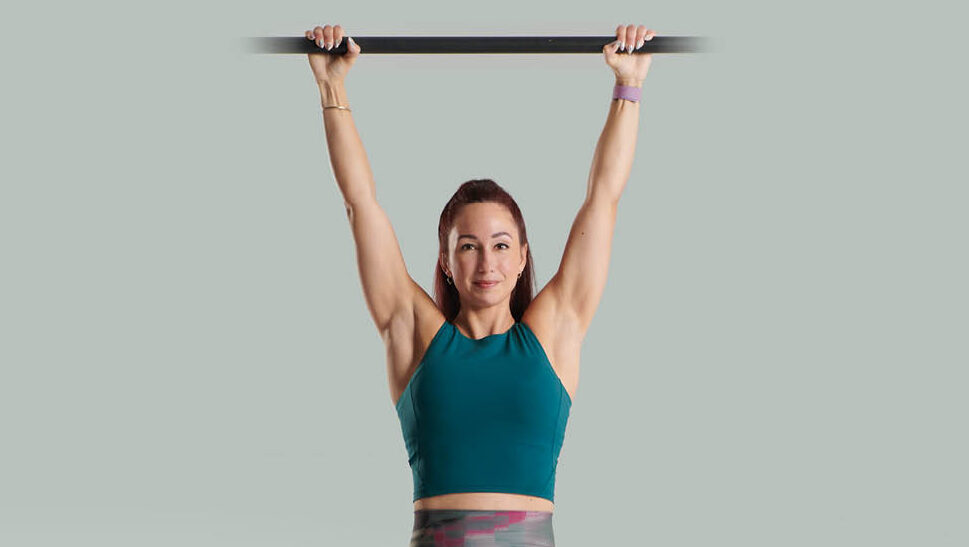

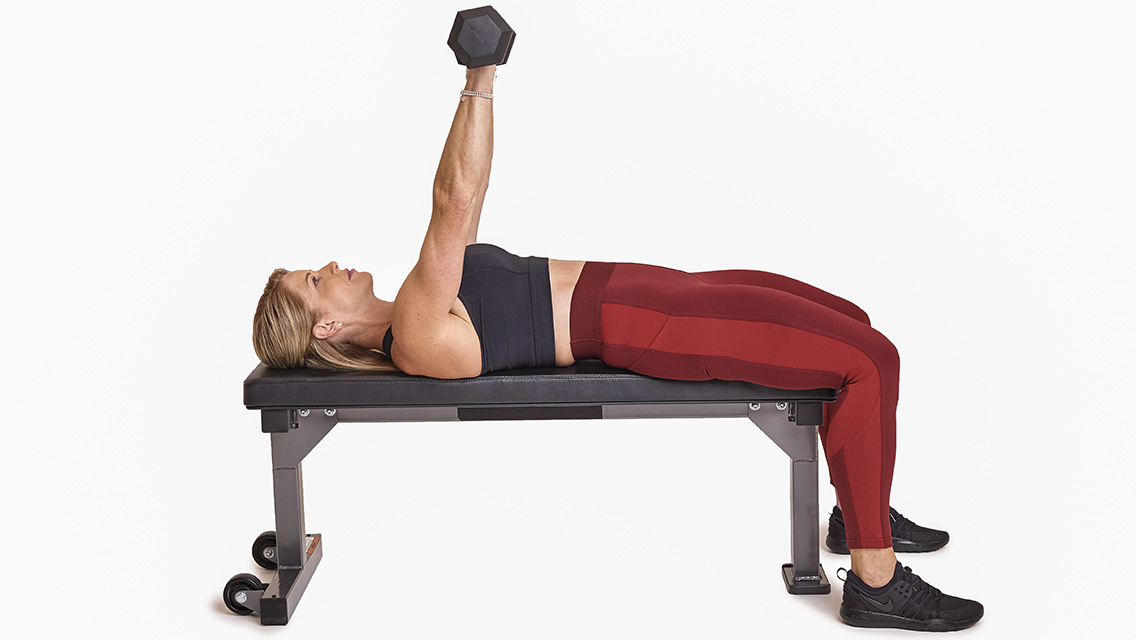
This Post Has One Comment
What do you do if you can do a straight arm hang with no problem but can’t hold a flexed arm hang for even a second?